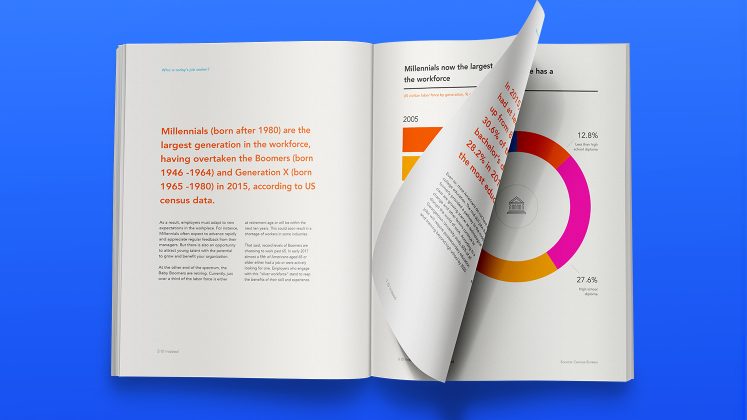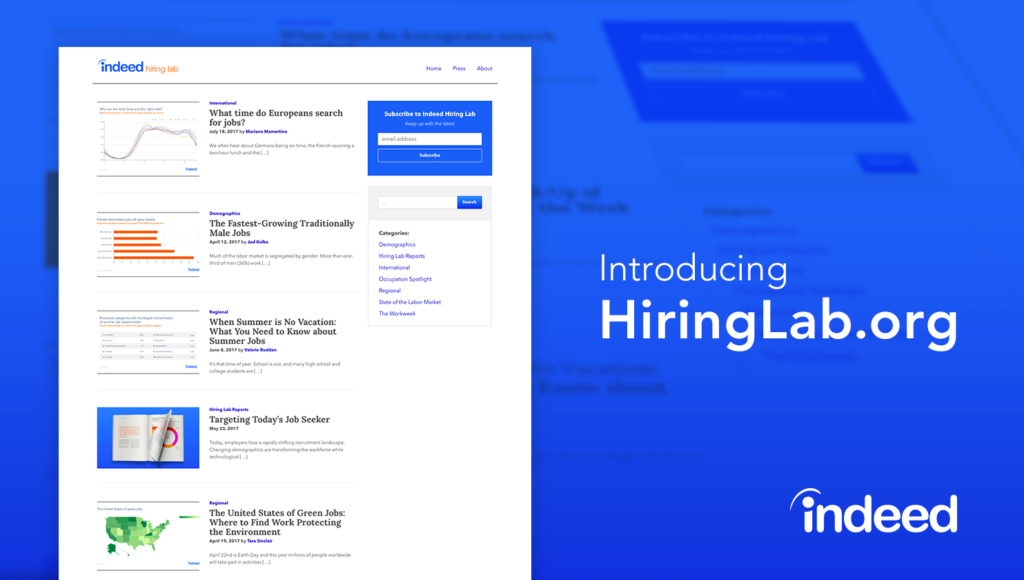We regularly update this report to track the pandemic’s effects on the labor market.
Job postings on Indeed are a real-time measure of labor market activity. On October 8, 2021, they were 46.1% above February 1, 2020, the pre-pandemic baseline, after adjusting for seasonal variation. Postings were up 1.1 percentage points in the past week.
The Bureau of Labor Statistics reported 10.4 million job openings at the end of August in its latest JOLTS report. Job postings on Indeed increased 4.2% between August 31 and October 8. If JOLTS openings have grown since August 31 at the same rate as Indeed job postings, that implies 10.8 million job openings as of October 8.
Lots of postings for HR and manufacturing jobs
Job postings in nearly all sectors are above the pre-pandemic baseline, led by human resources and production & manufacturing. Pharmacy jobs have also risen as vaccination rates rise and flu season approaches. Despite being on the other side of the delta surge, job postings flattened in some in-person sectors like food prep, and dipped in beauty & wellness as COVID-19 cases remain high.
Human resources jobs are far above baseline, as employers are eager to hire the people who will help them hire others. HR job postings are 92.9% above baseline and have climbed 9 points higher than four weeks ago.
Employers are also sweetening job offers to try to attract workers. Nearly 5% of job postings on Indeed are advertising hiring incentives, like cash or signing bonuses. That’s a substantial increase from a year ago when only 2.3% of job postings advertised incentives.
Metros where job postings have recovered more slowly
Within the US, job postings are up essentially everywhere. Except for Honolulu, postings are at least 20% above the pre-pandemic baseline in all large metros.
Job postings are now up almost as much in large metros as in smaller metros. The gap between job postings growth in the largest and smallest metros is now only 4 percentage points, a far cry from the 15 point gap a year ago.
We host the underlying job-postings chart data on Github as downloadable CSV files. Typically, it will be updated with the latest data one day after this blogpost was published.
Methodology
All figures in this blog post are the percentage change in seasonally-adjusted job postings since February 1, 2020, using a seven-day trailing average. February 1, 2020, is our pre-pandemic baseline. We seasonally adjust each series based on historical patterns in 2017, 2018, and 2019. Each series, including the national trend, occupational sectors, and sub-national geographies, is seasonally adjusted separately. We adopted this new methodology in January 2021. Data for June 24-30, 2021, are missing and were interpolated.
Indeed no longer allows Colorado jobs that ask the candidate to disclose their previous salaries. This has a meaningful effect on our postings in the state of Colorado and its metros, though not on our national totals.
The number of job postings on Indeed.com, whether related to paid or unpaid job solicitations, is not indicative of potential revenue or earnings of Indeed, which comprises a significant percentage of the HR Technology segment of its parent company, Recruit Holdings Co., Ltd. Job posting numbers are provided for information purposes only and should not be viewed as an indicator of performance of Indeed or Recruit. Please refer to the Recruit Holdings investor relations website and regulatory filings in Japan for more detailed information on revenue generation by Recruit’s HR Technology segment.


